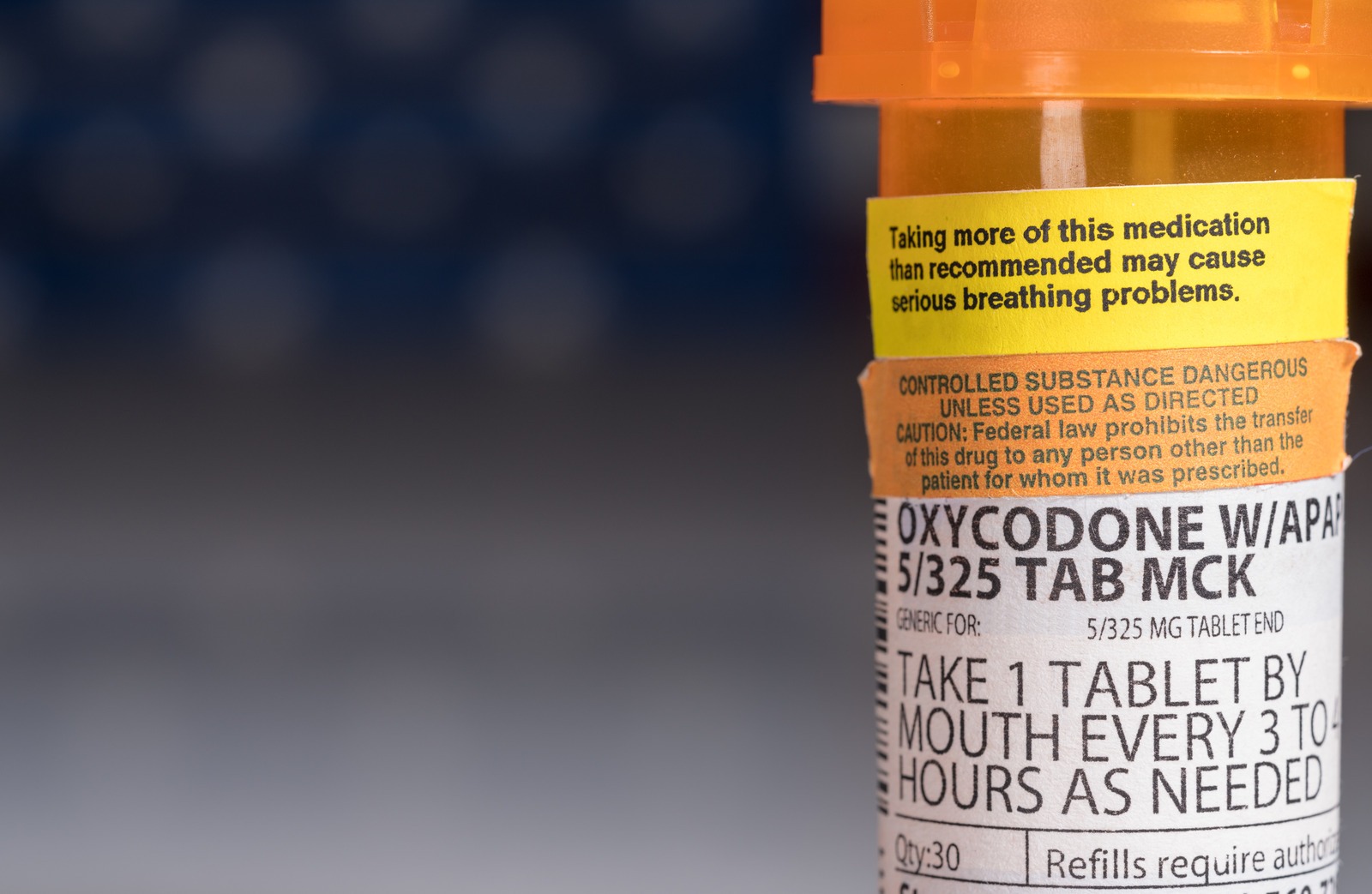Is Oxycodone The Same As Percocet? What Are the Differences?

What you will learn
- Oxycodone and Percocet are both opioid medications used in pain management.
- Oxycodone is a standalone opioid, while Percocet combines oxycodone with acetaminophen.
- Both medications work by binding to opioid receptors in the brain and spinal cord to relieve pain.
- Prescription opioid misuse can lead to respiratory depression, overdose, and potential addiction.
- Seeking professional help for opioid addiction can be critical in beginning the recovery process.
Is Oxycodone The Same As Percocet?
Both oxycodone and Percocet are commonly prescribed pain medications for a variety of conditions, but their misuse carries significant risks. While both contain the powerful opioid oxycodone, they differ in their formulations and intended uses.
Understanding the nuances between oxycodone and Percocet is important for those seeking the appropriate pain relief, as doing so helps you to make informed decisions to mitigate the potential risks associated with opioid medications.
What is Oxycodone?
Oxycodone is a powerful, synthetic opioid pain medication used to relieve moderate to severe pain.[1] It belongs to a class of drugs known as opioid analgesics, which work by binding to opioid receptors in the brain and spinal cord, blocking the perception of pain.
Oxycodone is often prescribed for pain relief after surgery, injury, or for chronic conditions such as cancer-related pain. It may be prescribed alone or in combination with other medications, such as acetaminophen or aspirin, to enhance its effectiveness.
What is Percocet?
Percocet, on the other hand, is a brand-name medication that contains a combination of two active ingredients: oxycodone, an opioid pain reliever, and acetaminophen, a fever reducer.[2] Percocet is used to treat moderate to severe pain, often following surgery, injury, or for chronic pain conditions. It also works by binding to opioid receptors in the brain and spinal cord, blocking the perception of pain, while acetaminophen enhances its pain-relieving effects.
How Are These Medications Similar?
Oxycodone and Percocet are similar in that they both contain oxycodone. Both medications are used to treat moderate to severe pain and work by binding to opioid receptors in the brain and spinal cord, helping to mask the perception of pain.[3]
Additionally, both oxycodone and Percocet carry a high risk of dependence, addiction, and overdose, particularly when misused or taken in higher doses than prescribed. Therefore, both medications require close monitoring by healthcare professionals and should be used cautiously and only as directed.
How Are They Different?
While both medications share the opioid ingredient of oxycodone, Percocet combines oxycodone with acetaminophen, offering a dual mechanism of action for pain relief. While this combination can enhance pain relief, it does not necessarily make Percocet more potent than oxycodone alone. The addition of acetaminophen is intended to enhance the pain-relieving effects of oxycodone and provide fever reduction but does not increase the opioid strength. Oxycodone refers specifically to the opioid component of Percocet, which is a brand-name medication that contains a combination of oxycodone and acetaminophen.[4] This combination enhances the pain-relieving effects of oxycodone while providing additional pain relief and fever reduction from acetaminophen.
What Are the Risks of Misusing Oxycodone or Percocet?

Misusing oxycodone or Percocet can severely compromise your health, including:[5]
- Respiratory depression: Both oxycodone and Percocet can suppress breathing, leading to dangerously low oxygen levels.
- Overdose: Misuse increases the risk of overdose, potentially resulting in coma, brain damage, or death.
- Dependence and addiction: Continued misuse can lead to physical dependence and addiction, characterized by compulsive drug-seeking behavior.
- Tolerance: Prolonged misuse may result in tolerance, where progressively higher doses of the medication are required to achieve the same effect. This increasing dosage elevates the risk of overdose, as the body’s ability to handle higher doses safely may be exceeded.
- Long-term health effects: Chronic misuse can lead to liver damage (from acetaminophen in Percocet), cognitive impairment, hormonal imbalances, and increased risk of infections.
The Dangers of Prescription Opioid Misuse
The dangers of prescription opioid misuse can be significant, encompassing both immediate and long-term risks to your health. Misusing any opioid runs the risk of respiratory depression, where medications like oxycodone can suppress breathing—particularly when combined with other substances. Additionally, opioid misuse can result in overdose, which can cause coma, permanent brain damage, or death without medical intervention.
Beyond the acute dangers, prescription opioid misuse can also lead to the development of physical dependence and addiction.[6] Continued misuse of opioids can alter the brain’s chemistry, leading to changes in reward pathways and reinforcing drug-seeking behavior.
Dependence can develop rapidly, requiring higher doses to achieve the desired effect as tolerance develops. The cycle of dependence and addiction can be incredibly challenging to break, often necessitating comprehensive medical and behavioral interventions to address both the physical and psychological aspects of the disorder.
Furthermore, prescription opioid misuse can have far-reaching social and economic consequences as well, straining your relationships with family and friends and contributing to financial hardship.
What Can I Do To Get Help?
Seeking help for prescription opioid misuse or addiction is vital for beginning your recovery, and there are several avenues available to support you or a loved one in their journey. Reach out to a healthcare professional specializing in addiction treatment, as they can provide personalized assessments, medical support, and guidance on the most appropriate treatment options.
Treatment programs for prescription opioid addiction encompass a range of options to meet your needs. Outpatient counseling programs offer therapy sessions and support groups that allow individuals to receive treatment while maintaining their daily routines, whereas inpatient rehabilitation programs provide intensive, residential treatment in a controlled environment, offering a structured setting for detoxification, therapy, and skill-building activities.
Medication-assisted treatment (MAT) programs combine medications, such as methadone or buprenorphine, with counseling and behavioral therapies to address both the physical and psychological aspects of opioid addiction effectively.[7]
Recognizing the need for support and reaching out to professionals and treatment programs is a courageous and empowering decision that can lead to lasting recovery and improved quality of life. With Oxycontin rehab along with the guidance and support of a recovery network (and the resources available in the treatment community), you can embark on a journey of healing and transformation towards a healthier, substance-free life.
Ultimately, recovery is a personal journey, but with the collective strength of a supportive community, you can break free from the cycle of addiction and embrace a brighter future.
View our addiction treatment Annapolis guide to learn more about our specialized programs, designed to address your specific challenges. Feel free to get in touch with us to discover more about the care we provide.
Ready to get help for you or a loved one? Contact us
To ensure accuracy and quality, every contributor to the Alpas Wellness resource library undergoes a thorough evaluation of their experience, credentials, and achievements prior to publication.
Frequently Asked Questions About Oxycodone and Percocet
What conditions are oxycodone and Percocet prescribed to treat?
Oxycodone and Percocet are both prescribed to treat moderate to severe pain. Oxycodone is often used for chronic pain management, such as pain associated with cancer or other long-term conditions. Percocet, on the other hand, is commonly prescribed for acute pain relief, such as pain following surgery or injury.
How do oxycodone and Percocet relieve pain?
Both OxyContin and Percocet contain oxycodone, which is an opioid pain reliever. Oxycodone works by binding to opioid receptors in the brain and spinal cord, blocking the perception of pain. Additionally, Percocet contains acetaminophen, which enhances the pain-relieving effects of oxycodone.
What are the risks of long-term use of oxycodone and Percocet?
Long-term use of OxyContin and Percocet can increase the risk of developing tolerance, dependence, and addiction. Tolerance means that higher doses of the medication may be needed over time to achieve the same pain-relieving effect. Dependence occurs when the body becomes accustomed to the presence of the medication and experiences withdrawal symptoms when the medication is stopped. Addiction involves compulsive drug-seeking behavior despite negative consequences.
Are there different formulations or strengths of Percocet available?
Yes, Percocet is available in immediate-release tablets with varying strengths of oxycodone and acetaminophen, such as 5/325 mg, 10/325 mg, and others. OxyContin, however, is available as an extended-release tablet intended for managing pain continuously over a long period, typically in various strengths of oxycodone without acetaminophen.
How long do the effects of oxycodone and Percocet last?
The duration of effects for OxyContin and Percocet can vary depending on factors such as the formulation, strength, individual metabolism, and other medications being taken. Generally, the effects of immediate-release Percocet typically last around 4-6 hours, while the effects of extended-release OxyContin can last up to 12 hours.
Sadiq, N. M. (2022, August 22). Oxycodone. StatPearls [Internet]. https://www.ncbi.nlm.nih.gov/books/NBK482226/
Enforcement Reports. (n.d.). Www.accessdata.fda.gov. https://www.accessdata.fda.gov/drugsatfda_docs/label/2006/040330s015,040341s013,040434s003lbl.pdf
CAMH. (2018). Straight Talk – Oxycodone. CAMH. https://www.camh.ca/en/health-info/guides-and-publications/straight-talk-oxycodone
Oxycodone vs. Percocet: Uses, side effects, and more. (2022, July 28). Www.medicalnewstoday.com. https://www.medicalnewstoday.com/articles/oxycodone-vs-percocet
Mayo Clinic. (2023, November 29). How opioid addiction occurs. Mayo Clinic. https://www.mayoclinic.org/diseases-conditions/prescription-drug-abuse/in-depth/how-opioid-addiction-occurs/art-20360372
John Hopkins Medicine. (2022). Opioid Use Disorder. Www.hopkinsmedicine.org. https://www.hopkinsmedicine.org/health/conditions-and-diseases/opioid-use-disorder
U.S. Food & Drug Administration. (2023, May 23). Information about Medication-Assisted Treatment. U.S. Food and Drug Administration. https://www.fda.gov/drugs/information-drug-class/information-about-medication-assisted-treatment-mat